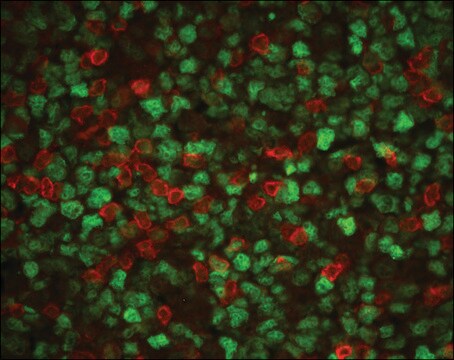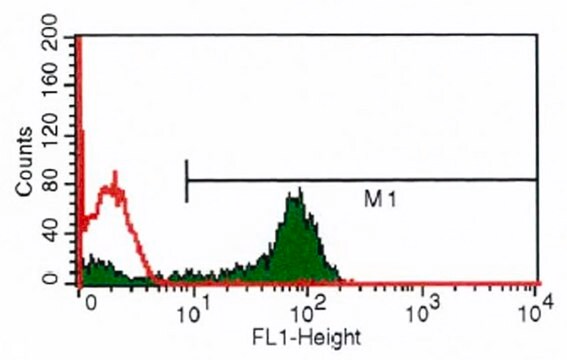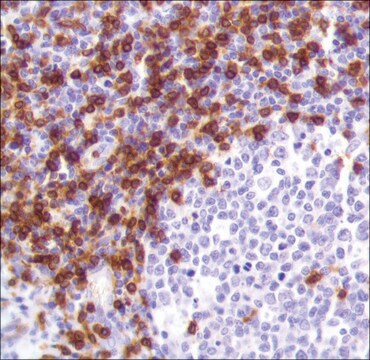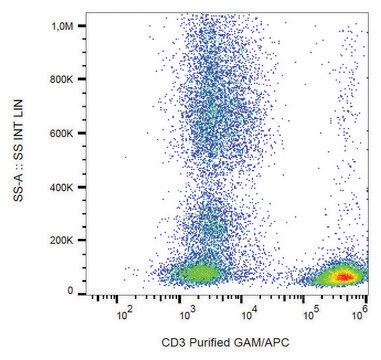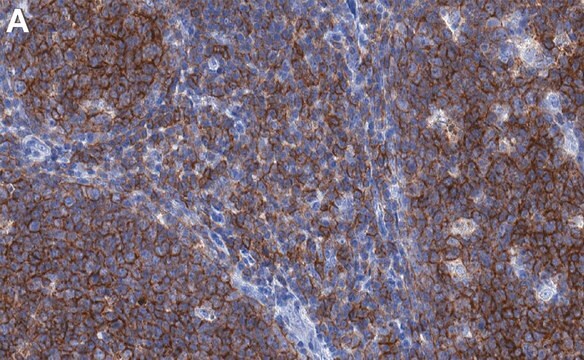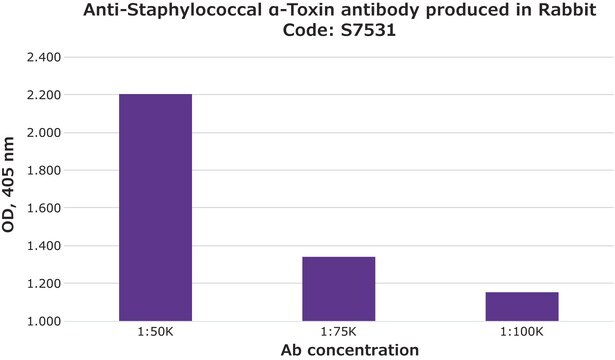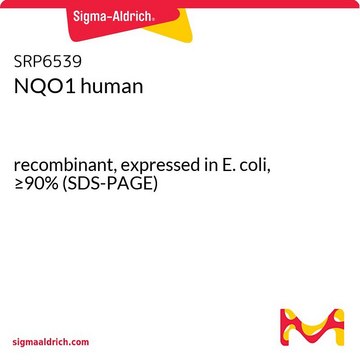C7048
Monoclonal Anti-CD3 antibody produced in mouse
clone UCHT-1, purified immunoglobulin, buffered aqueous solution
Sinónimos:
Monoclonal Anti-CD3
About This Item
Productos recomendados
origen biológico
mouse
conjugado
unconjugated
forma del anticuerpo
purified immunoglobulin
tipo de anticuerpo
primary antibodies
clon
UCHT-1, monoclonal
Formulario
buffered aqueous solution
reactividad de especies
human
técnicas
flow cytometry: 5 μL using 1 × 106 cells
isotipo
IgG1
Nº de acceso UniProt
Condiciones de envío
wet ice
temp. de almacenamiento
2-8°C
modificación del objetivo postraduccional
unmodified
Información sobre el gen
human ... CD3E(916)
¿Está buscando productos similares? Visita Guía de comparación de productos
Especificidad
4th Workshop: paper no. T3.2
Inmunógeno
Aplicación
Acciones bioquímicas o fisiológicas
Descripción de destino
Forma física
Cláusula de descargo de responsabilidad
¿No encuentra el producto adecuado?
Pruebe nuestro Herramienta de selección de productos.
Código de clase de almacenamiento
10 - Combustible liquids
Clase de riesgo para el agua (WGK)
nwg
Punto de inflamabilidad (°F)
Not applicable
Punto de inflamabilidad (°C)
Not applicable
Elija entre una de las versiones más recientes:
¿Ya tiene este producto?
Encuentre la documentación para los productos que ha comprado recientemente en la Biblioteca de documentos.
Nuestro equipo de científicos tiene experiencia en todas las áreas de investigación: Ciencias de la vida, Ciencia de los materiales, Síntesis química, Cromatografía, Analítica y muchas otras.
Póngase en contacto con el Servicio técnico